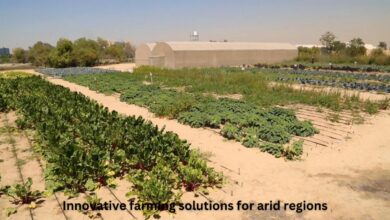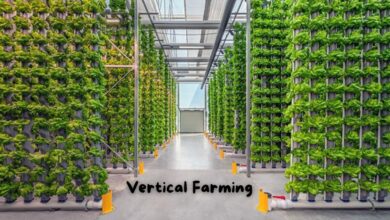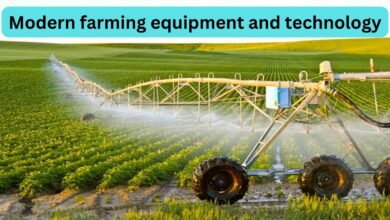Growing Mushrooms: How To Do Mushroom Farming 2024
Growing Mushrooms: A Guide to Mushroom Farming
Start an exciting journey into mushroom farming with this guide. It’s perfect for both beginners and experienced growers. You’ll learn everything you need to know to start a successful mushroom farm.
Mushroom farming is getting popular in India for many reasons. It uses agricultural waste and is full of nutrients. We’ll cover everything from picking the right mushrooms to creating a successful farm.

Want to make extra money, diversify your farm, or offer nutritious food? This guide has the knowledge and resources you need. Start your mushroom farming journey with confidence.
Introduction to Mushroom Farming
Mushroom farming, also known as mushroom cultivation, is a growing way to produce edible and medicinal mushrooms. It’s a special kind of farming that has many benefits. These benefits are drawing in both small and big growers.
Also Read : Innovative Farming Solutions for Arid Regions 2024
What is Mushroom Farming?
Mushroom farming means growing different kinds of mushrooms in a controlled setting. It’s different from traditional farming, which grows crops in soil. Mushroom farming uses special growing materials and methods to help mushrooms grow. This happens in places like greenhouses or old buildings, giving mushrooms the best conditions to grow.
Benefits of Mushroom Cultivation
Starting with mushroom farming has many benefits. It’s becoming more popular among farmers. Some main advantages are:
- Nutritional value: Mushrooms are full of vitamins, minerals, and antioxidants. They’re a great food choice.
- Medicinal properties: Some mushrooms can help with health issues, like supporting the immune system.
- Environmental sustainability: Mushroom farming can be good for the planet. It often uses waste or byproducts as food for the mushrooms.
- Profitability: It can be a profitable business, giving a good return on the resources used.
Learning about mushroom farming helps people and businesses see its potential. They can think about adding this unique farming method to what they do.

Choosing the Right Mushroom Variety
Choosing the right mushroom variety is key to successful mushroom farming. From the tasty types of edible mushrooms to the top popular mushroom varieties for farming, your choice affects your yields and profits. We’ll help you pick the best mushrooms to grow for your farm. We’ll look at climate, growing conditions, market demand, and what you like.
Also Read : Climate Change Impact on Farming: What to Know 2024
The button mushroom, also known as the Agaricus mushroom, is widely grown. It does well in many climates and is loved in many dishes. Oyster mushrooms are also popular for their mild taste and simple growing process.
- Shiitake mushrooms are great for farmers. They’re loved in Asian cooking and are easy to grow, making them a good choice.
- Enoki mushrooms have long stems and small caps. They’re getting more popular in cooking. Adding them to your farm can make your offerings stand out.
- The lion’s mane mushroom is a special choice. It tastes great and might have health benefits, appealing to health-focused buyers.
Looking at the many edible mushroom types, think about climate, growing medium, and market demand. Picking the right variety helps your farm succeed and gives customers a wide, quality selection of these tasty fungi.
| Mushroom Variety | Climate Preference | Yield Potential | Market Demand |
|---|---|---|---|
| Button Mushroom | Wide range | High | Consistently high |
| Oyster Mushroom | Temperate | Moderate to high | Increasing |
| Shiitake Mushroom | Cool, humid | Moderate to high | High in Asian markets |
| Enoki Mushroom | Cool, humid | Moderate | Growing in popularity |
| Lion’s Mane Mushroom | Cool, humid | Moderate | Niche, but increasing |
Setting Up a Mushroom Farm
Starting a mushroom farm needs careful planning and the right tools. It doesn’t matter if you’re new or have grown mushrooms before. The secret to getting lots of mushrooms is making a great place for them to grow. Let’s look at what you need to set up your mushroom farm right.
Also Read : Boost Your Livestock Farm Profits: Livestock farming profitability tips 2024
Essential Equipment and Supplies
For mushroom farming, you need special tools and supplies. Here are some things you must have:
- Spawn, the initial mushroom culture that kickstarts the growing process
- Substrates, such as sawdust, straw, or grain, to provide the necessary nutrients for mushroom growth
- Incubation chambers or grow rooms to maintain the ideal temperature and humidity levels
- Sterilization equipment, like pressure cookers or autoclaves, to prevent contamination
- Ventilation systems to regulate air flow and gas exchange
- Shelving or racks to maximize growing space
- Harvesting tools, such as knives or scissors, to carefully collect the mature mushrooms
Creating the Optimal Growing Environment
Mushrooms need certain conditions to grow well. Making sure these conditions are right is key to your mushroom farm’s success. Think about these things:
| Factor | Optimal Range |
|---|---|
| Temperature | 55°F to 75°F (12°C to 24°C) |
| Humidity | 90% to 95% |
| Light | 12 to 14 hours of indirect, diffused light per day |
| Air Flow | Gentle air circulation, avoiding stagnant conditions |
By controlling these factors, you can make the perfect place for mushrooms to grow. With the right tools and a well-managed space, you’ll be on your way to successful mushroom farming.
Harvesting and Post-Harvest Handling
Harvesting your mushroom crops at the right time is key. Wait until the mushroom caps are fully open but before they curl up. This way, you get the best taste and freshness. To pick, gently twist and pull the mushrooms from the base, being careful with the stems.
Identifying the Right Time to Harvest
When the mushroom caps are fully grown and start to flatten, it’s time to pick them. Mushrooms can spoil quickly, so harvest them when they’re at their best. Watch your crops closely and harvest when they’re ready.
After picking, it’s important to handle the mushrooms well to keep them fresh. Clean them by removing dirt and sort them by size and quality. Store them in a cool, dry place and use special packaging to keep them fresh. With these steps, you can make sure your mushrooms are the best for your customers.
FAQ
What is mushroom farming?
Mushroom farming is growing and harvesting edible and medicinal mushrooms in a controlled setting. It’s done for both commercial and personal use.
What are the benefits of mushroom farming?
Mushroom farming has many benefits. It provides a sustainable food source and can be profitable. It uses waste as mushroom food and helps the environment by reducing waste and cleaning pollutants.
It also lets small farmers earn more by growing different products.
How do I choose the right mushroom variety to grow?
Pick a mushroom type based on your climate, growing conditions, market demand, and what you like. Popular varieties include oyster, shiitake, button, and lion’s mane mushrooms. Each type has its own needs.
What equipment and supplies are needed to set up a mushroom farm?
You’ll need things like mushroom spawn, grow rooms, and tools for preparing the growing area. Also, you’ll need equipment for harvesting, packaging, and storing mushrooms.
How do I create the optimal growing environment for mushrooms?
For growing mushrooms, focus on the right temperature, humidity, air flow, and light. The substrate and cleanliness are also key. These factors help mushrooms grow well.
When is the best time to harvest mushrooms?
Harvest mushrooms when their caps are open and gills show, but before they curl up. This ensures they are fresh and taste best.
How do I handle and store harvested mushrooms?
After harvesting, clean and sort mushrooms carefully. Store them in a cool, dry spot with the right temperature and humidity. Use special packaging to keep them fresh. You might also refrigerate or freeze them for longer storage.




